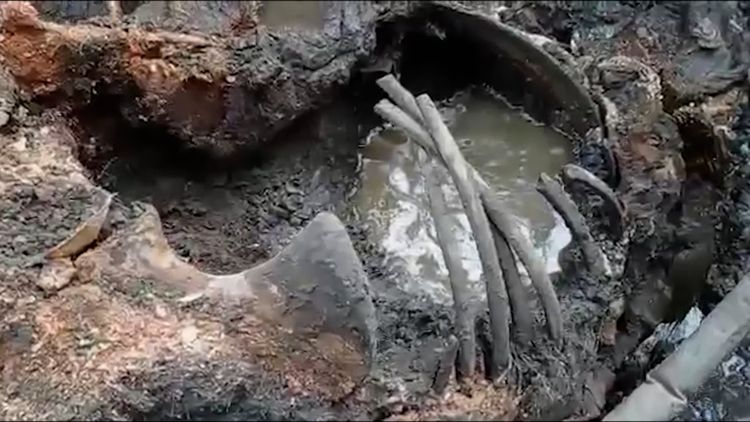
Miners in Kolyma posed for photos with the extinct Ice Age beast (Picture: e2w)
The last woolly rhinoceroses roamed Earth in Ice Age conditions, hunted by early humans who ate their meat and pictured them in cave drawings.

Their heyday was so long ago that we still know little about them, but now a group of gold miners have dug up what appears to be one still largely intact.
With a bulldozer in the background, one of the men gave the thumbs up crouching over it as he posed for for a phone photo.

The skull of the rhino dug up by miners in the far east of Russia (Picture: e2w)

How the woolly rhinoceros is thought to have looked (Picture: Shutterstock)

The carcass was found during mining for gold (Picture: social media/e2w)

The rhino was discovered in Kolyma, far eastern Russia (Picture: e2w)

Other preserved remains have been found in this area, which is covered by permafrost (Picture: e2w)

Two men lifting the preserved carcass of a baby mammoth, given the name Dima, from where it was accidently unearthed from the permafrost by a bulldozer in Magadan, Russia, in 1977 (Picture: Getty)
One of the most famous is Dima, a baby mammoth found in the Magadan region in 1977, then the only fully preserved mammoth ever known to science.

Some hope that such finds could make it possible to bring megafauna like this back to life, using DNA from their carcasses.
Scientists have looked into editing genes to make this possible, although the ethics are debated as Earth in 2024 lacks the habitat to allow them to survive.